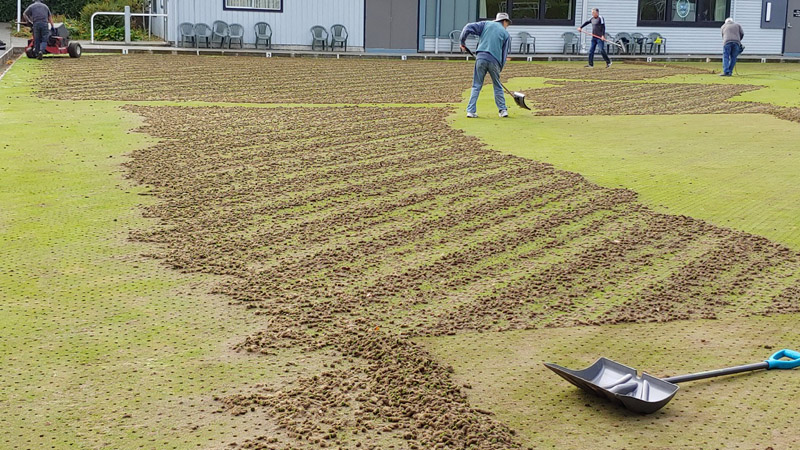
The greens have been aerated!!! Thanks to Shaen for getting a great work crew out and for coordinating with John C the greenskeeper.
The Importance of Aeration and How It’s Done
Bowling greens are the heart and soul of any lawn bowling club. They provide a smooth playing surface that allows bowlers to showcase their skills and enjoy the game. But have you ever wondered why these greens need to be aerated?
Understanding the Need for Aeration
Before we dive into the process of aeration, let’s first understand why it is necessary. Bowling greens endure heavy foot traffic, which can lead to soil compaction over time. Compacted soil prevents air, water, and nutrients from reaching the grass roots, ultimately impeding the growth and health of the green. This can result in shallow-rooted turf, increased thatch accumulation, and reduced drainage capabilities.

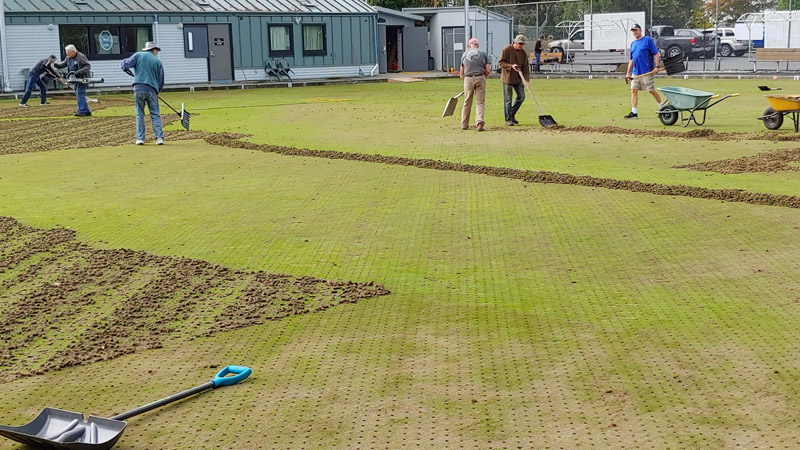
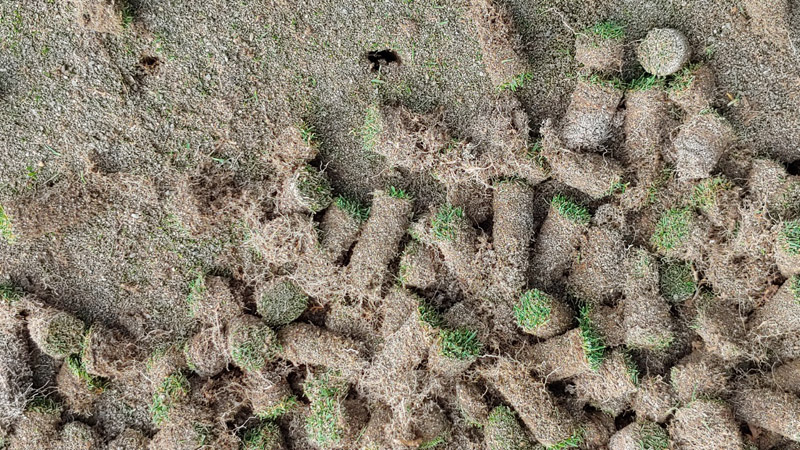
To combat these issues, aeration becomes crucial. By creating channels in the soil, aeration helps loosen compacted areas, promotes root development, enhances water infiltration, and encourages the exchange of gases. Ultimately, this improves the overall health and playability of the bowling green.
The Aeration Process Explained
Aeration involves the removal of small soil cores or the creation of holes in the turf to allow proper airflow and water penetration. Here’s a breakdown of the steps involved:
- Assessing the Green: The first step in the aeration process is to assess the condition of the bowling green. This assessment helps determine the appropriate aeration method, considering factors such as soil type, level of compaction, and grass species present.
- Selecting the Aeration Method: There are various methods of aeration available, including solid-tine aeration, hollow-tine aeration, and vertical mowing. Each method has its own benefits and applications. For example, solid-tine aeration is ideal for regular maintenance and reducing soil compaction, while hollow-tine aeration is more effective in alleviating severe compaction and thatch build-up.
- Aeration Implementation: Once the appropriate method is selected, the actual aeration process begins. Depending on the chosen method, specialized equipment such as aeration machines, spiked rollers, or hand tools may be used to create holes or remove soil cores from the green. This process is typically carried out in a cross-pattern to ensure maximum coverage.
- Post-Aeration Care: After aeration, the bowling green requires proper care to aid in recovery. Essential post-aeration activities include top-dressing with sand to fill the holes, overseeding to promote new growth, and regular irrigation to maintain moisture levels. These practices help smoothen the surface and accelerate the healing process of the green.
Conclusion
Aeration is an integral part of maintaining healthy and playable bowling greens. By improving soil structure, aeration enables optimal root growth, water infiltration, and gas exchange. Regularly aerating the green not only enhances its performance but also prolongs its lifespan.
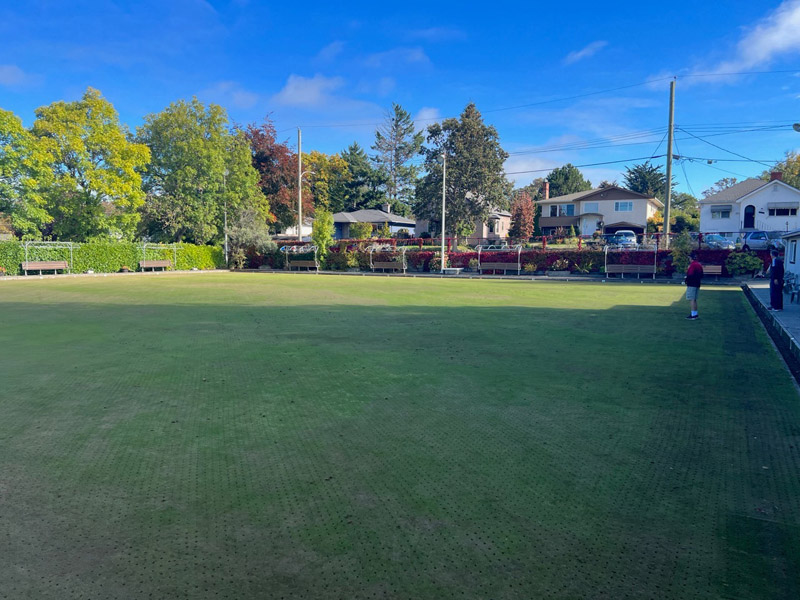
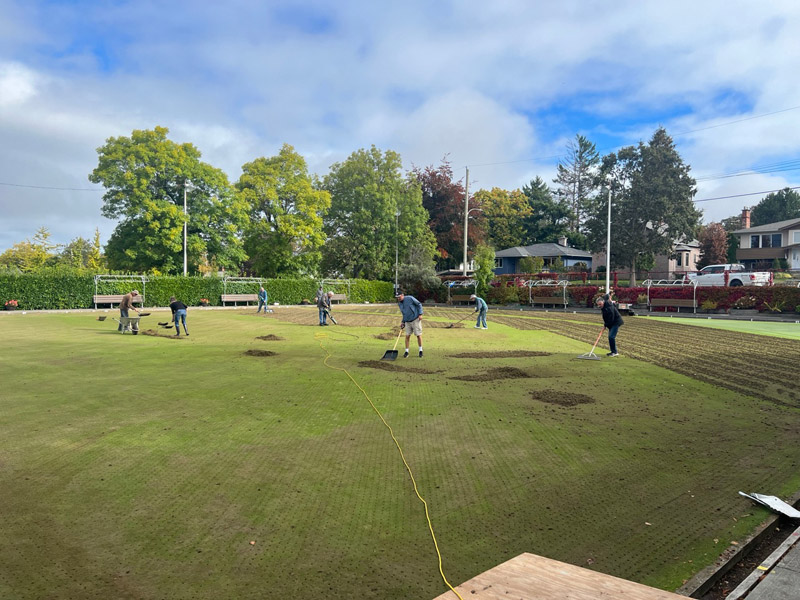
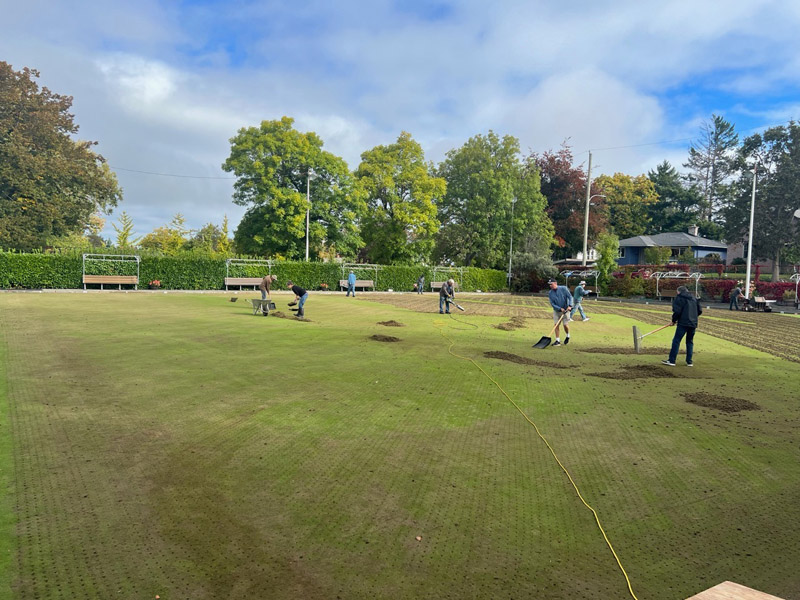
Thanks also to the wonderful 11 person volunteer crew who came out to help gather up the aeration cores – with so many helping hands it was all done in just over an hour of work – and the weather was wonderful to boot.
Needless to say, keep off the greens until further notice.
The cleanup crew included Shaen, Joe, Larry, Nick, Gina, Randy, Kenn, Ralph, Ralph, John R. and Kevin.
Next time you step onto the bowling green, take a moment to appreciate the effort put into keeping it in top-notch condition. Remember, a well-aerated green ensures an enjoyable and satisfying bowling experience for all.
